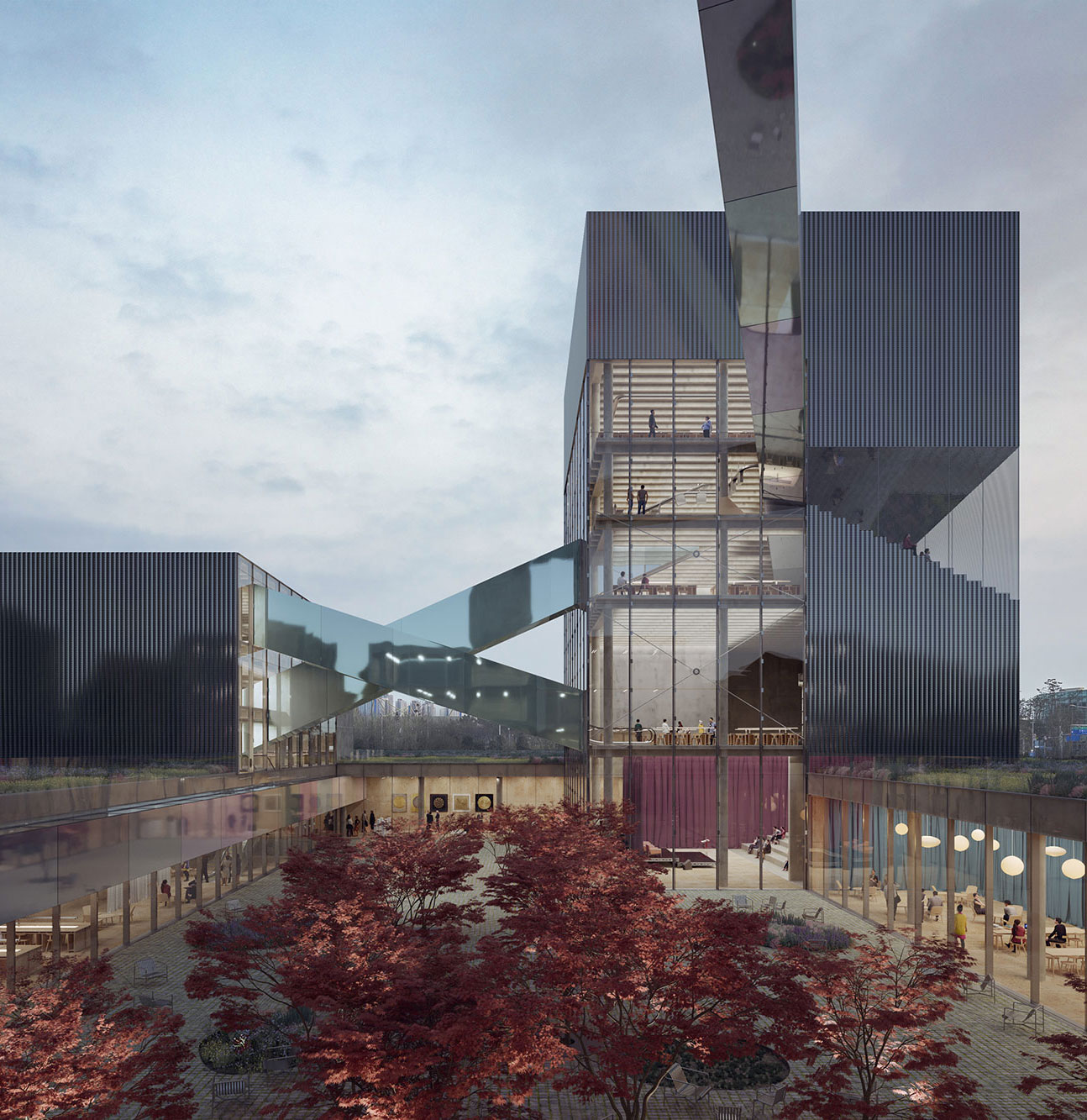Songdo, SK
PRG: Songdo Library
SQM: 8000
The Songdo Library project is located in one of the many isolated, abandoned and empty plots in the reclaimed coastal land on the outskirts of Songdo city. Due to the lack of local references, this project started with a reflection on the role of the library in contemporary cities. Throughout history, the principles of expandability and the requirement to enable visual surveillance on the overall space, has led to a central and simplistic typology. More recently, this defined typology appears to be under several risks: on one hand, a great amount of data is easily accessible from personal devices; conversely, we are seeing a continuous erosion of the public domain. The danger is that, in response, libraries could close on themselves becoming fortresses of knowledge, detached from society.
It is our belief that a library should instead, thanks to CCTV and the digitalization of content, open up to society by redefining its role within the city and question its basic certainties, starting from its typology. Moreover, this need is required when analyzing Songdo City which is dominated by a general lack of human scale, caused by a great number of empty plots. In contrast to this vision of the city, the Songdo Library project instead values the principle of proximity. Our proxemic investigation has found its main reference in the industrial citadels photographed by Bernd and Hilla Becher. If we pause to analyze their scale and nature, we can see how these organisms are made up of a series of measured spaces and objects, well connected to each other. Aiming to emulate such a well-measured context, this project intends to reinvent this reference to spatiality and equip the library with a system of public spaces, thus domesticating the area. The diverse spaces and functions within the library, instead of being compressed in one building, have been divided into three structures. The buildings are held together through an underground connective loop, organized around a system courtyards, hosting the cultural spaces and allowing the whole complex to work as a human-scaled and unique machine. The library is crossed and deeply connected by a continuous flow of people and books: the rotating library system on the shelves is automatized, allowing to easily switch between collection and organization. Adopting a curatorial approach, content can be freely changed, thus reinterpreting the productive nature of the library as a moving and changing system in the production of values.
